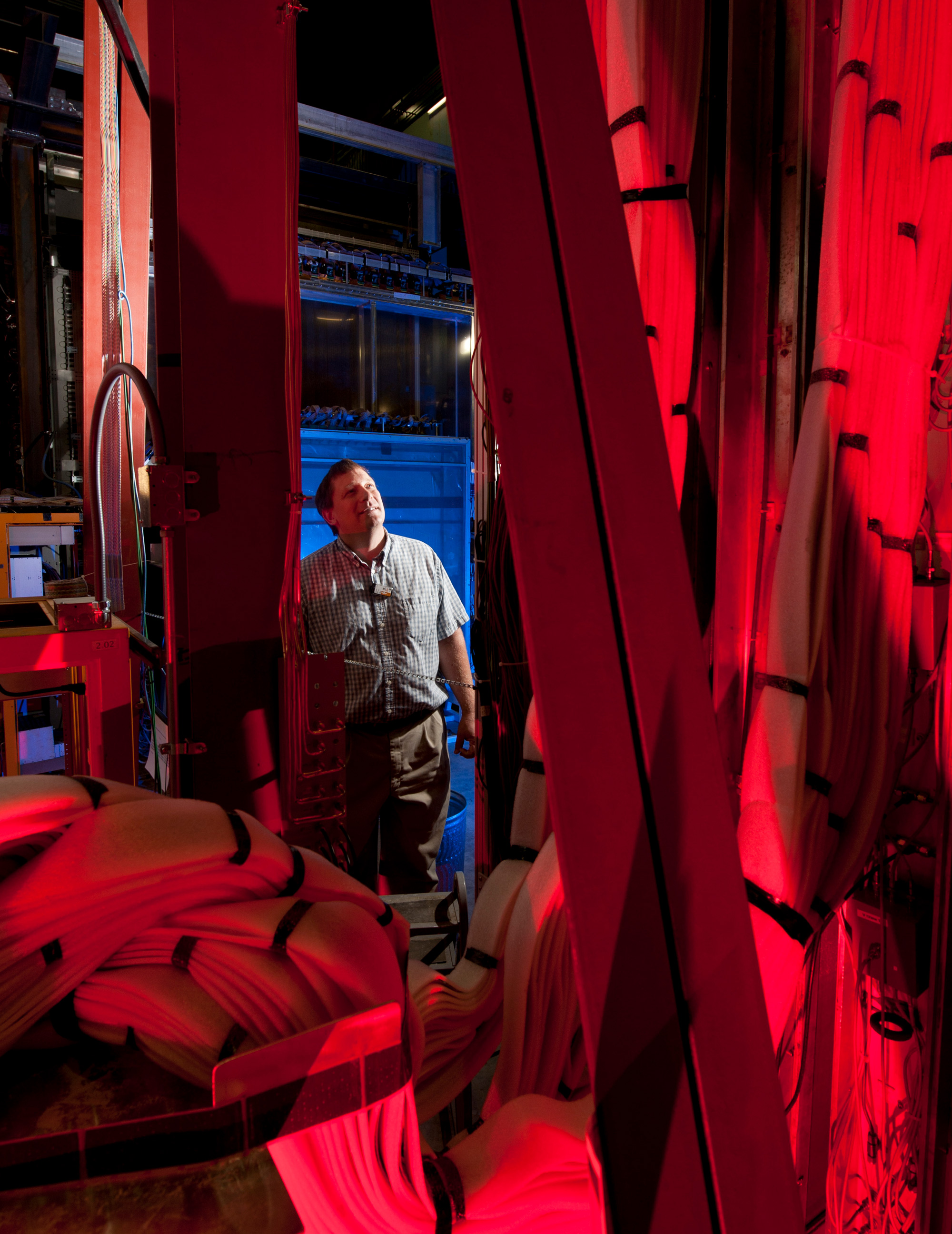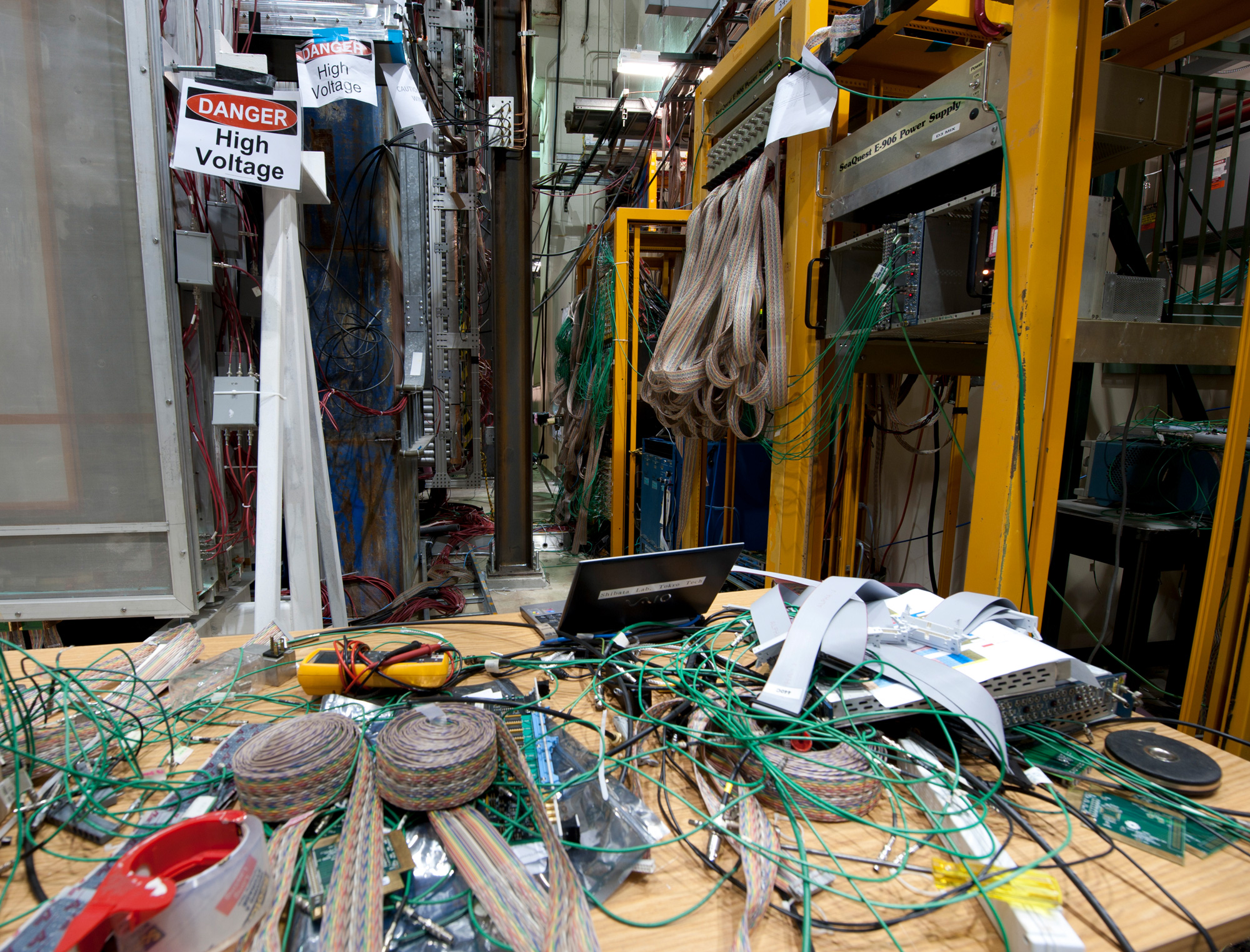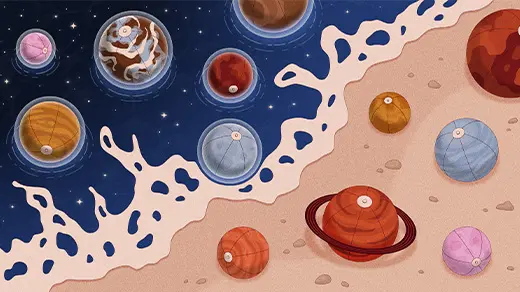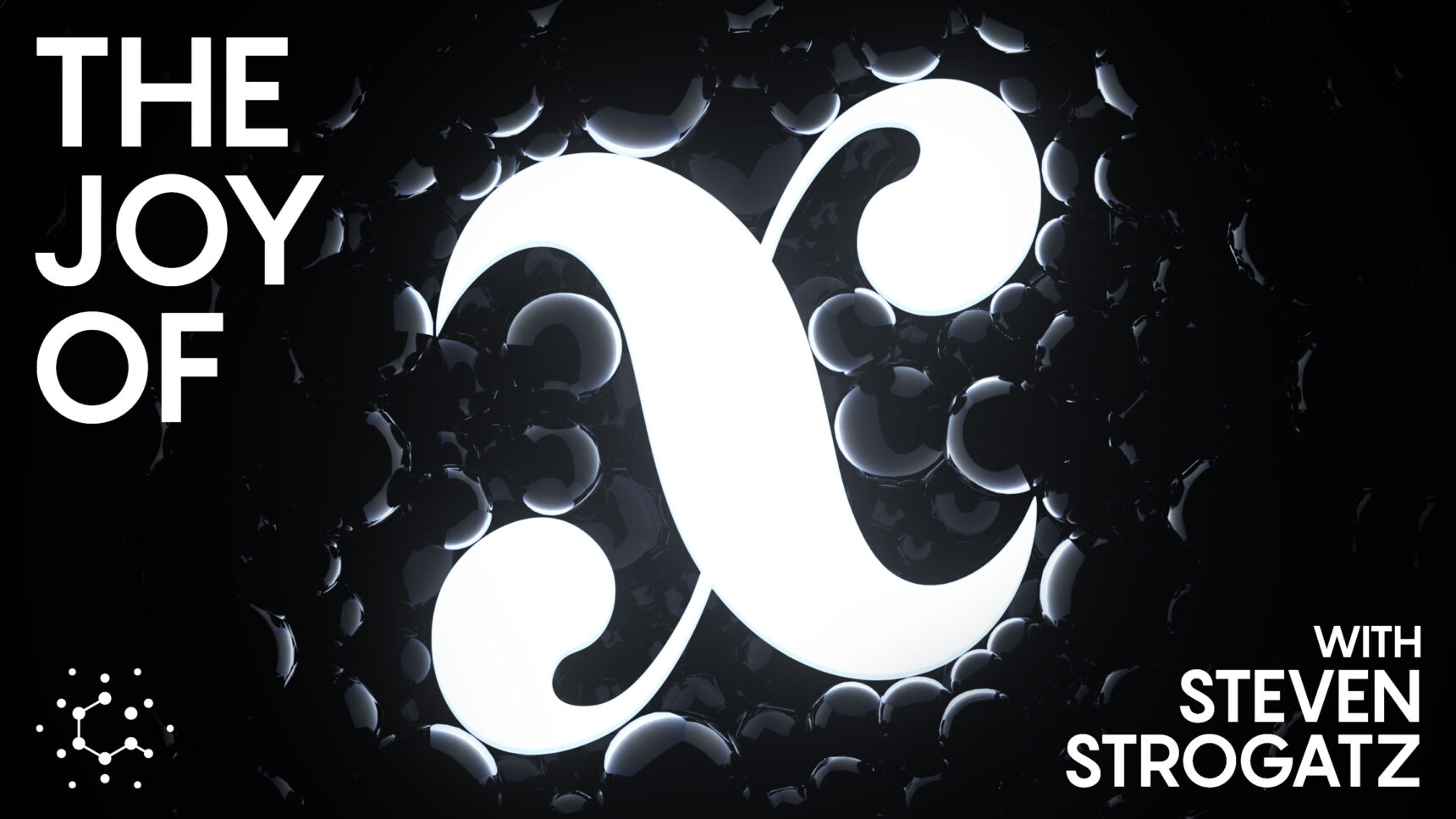Decades-Long Quest Reveals Details of the Proton’s Inner Antimatter
Introduction
It often goes unmentioned that protons, the positively charged matter particles at the center of atoms, are part antimatter.
We learn in school that a proton is a bundle of three elementary particles called quarks — two “up” quarks and a “down” quark, whose electric charges (+2/3 and −1/3, respectively) combine to give the proton its charge of +1. But that simplistic picture glosses over a far stranger, as-yet-unresolved story.
In reality, the proton’s interior swirls with a fluctuating number of six kinds of quarks, their oppositely charged antimatter counterparts (antiquarks), and “gluon” particles that bind the others together, morph into them and readily multiply. Somehow, the roiling maelstrom winds up perfectly stable and superficially simple — mimicking, in certain respects, a trio of quarks. “How it all works out, that’s quite frankly something of a miracle,” said Donald Geesaman, a nuclear physicist at Argonne National Laboratory in Illinois.
Thirty years ago, researchers discovered a striking feature of this “proton sea.” Theorists had expected it to contain an even spread of different types of antimatter; instead, down antiquarks seemed to significantly outnumber up antiquarks. Then, a decade later, another group saw hints of puzzling variations in the down-to-up antiquark ratio. But the results were right on the edge of the experiment’s sensitivity.
So, 20 years ago, Geesaman and a colleague, Paul Reimer, embarked on a new experiment to investigate. That experiment, called SeaQuest, has finally finished, and the researchers report their findings today in the journal Nature. They measured the proton’s inner antimatter in more detail than ever before, finding that there are, on average, 1.4 down antiquarks for every up antiquark.
Samuel Velasco/Quanta Magazine
The data immediately favors two theoretical models of the proton sea. “This is the first real evidence backing up those models that has come out,” said Reimer.
One is the “pion cloud” model, a popular, decades-old approach that emphasizes the proton’s tendency to emit and reabsorb particles called pions, which belong to a group of particles known as mesons. The other model, the so-called statistical model, treats the proton like a container full of gas.
Planned future experiments will help researchers choose between the two pictures. But whichever model is right, SeaQuest’s hard data about the proton’s inner antimatter will be immediately useful, especially for physicists who smash protons together at nearly light speed in Europe’s Large Hadron Collider. When they know exactly what’s in the colliding objects, they can better piece through the collision debris looking for evidence of new particles or effects. Juan Rojo of VU University Amsterdam, who helps analyze LHC data, said the SeaQuest measurement “could have a big impact” on the search for new physics, which is currently “limited by our knowledge of the proton structure, in particular of its antimatter content.”
Three’s Company
For a brief period around half a century ago, physicists thought they had the proton sorted.
In 1964, Murray Gell-Mann and George Zweig independently proposed what became known as the quark model — the idea that protons, neutrons and related rarer particles are bundles of three quarks (as Gell-Mann dubbed them), while pions and other mesons are made of one quark and one antiquark. The scheme made sense of the cacophony of particles spraying from high-energy particle accelerators, since their spectrum of charges could all be constructed out of two- and three-part combos. Then, around 1970, researchers at Stanford’s SLAC accelerator seemed to triumphantly confirm the quark model when they shot high-speed electrons at protons and saw the electrons ricochet off objects inside.
But the picture soon grew murkier. “As we started trying to measure the properties of those three quarks more and more, we discovered that there were some additional things going on,” said Chuck Brown, an 80-year-old member of the SeaQuest team at the Fermi National Accelerator Laboratory who has worked on quark experiments since the 1970s.
Scrutiny of the three quarks’ momentum indicated that their masses accounted for a minor fraction of the proton’s total mass. Furthermore, when SLAC shot faster electrons at protons, researchers saw the electrons ping off of more things inside. The faster the electrons, the shorter their wavelengths, which made them sensitive to more fine-grained features of the proton, as if they’d cranked up the resolution of a microscope. More and more internal particles were revealed, seemingly without limit. There’s no highest resolution “that we know of,” Geesaman said.
The results began to make more sense as physicists worked out the true theory that the quark model only approximates: quantum chromodynamics, or QCD. Formulated in 1973, QCD describes the “strong force,” the strongest force of nature, in which particles called gluons connect bundles of quarks.
QCD predicts the very maelstrom that scattering experiments observed. The complications arise because gluons feel the very force that they carry. (They differ in this way from photons, which carry the simpler electromagnetic force.) This self-dealing creates a quagmire inside the proton, giving gluons free rein to arise, proliferate and split into short-lived quark-antiquark pairs. From afar, these closely spaced, oppositely charged quarks and antiquarks cancel out and go unnoticed. (Only three unbalanced “valence” quarks — two ups and a down — contribute to the proton’s overall charge.) But physicists realized that when they shot in faster electrons, they were hitting the small targets.
Yet the oddities continued.
Self-dealing gluons render the QCD equations generally unsolvable, so physicists couldn’t — and still can’t — calculate the theory’s precise predictions. But they had no reason to think gluons should split more often into one type of quark-antiquark pair — the down type — than the other. “We would expect equal amounts of both to be produced,” said Mary Alberg, a nuclear theorist at Seattle University, explaining the reasoning at the time.
Hence the shock when, in 1991, the New Muon Collaboration in Geneva scattered muons, the heavier siblings of electrons, off of protons and deuterons (consisting of one proton and one neutron), compared the results, and inferred that more down antiquarks than up antiquarks seemed to be splashing around in the proton sea.
Proton Parts
Theorists soon came out with a number of possible ways to explain the proton’s asymmetry.
One involves the pion. Since the 1940s, physicists have seen protons and neutrons passing pions back and forth inside atomic nuclei like teammates tossing basketballs to each other, an activity that helps link them together. In mulling over the proton, researchers realized that it can also toss a basketball to itself — that is, it can briefly emit and reabsorb a positively charged pion, turning into a neutron in the meantime. “If you’re doing an experiment and you think you’re looking at a proton, you’re fooling yourself, because some of the time that proton is going to fluctuate into this neutron-pion pair,” said Alberg.
Specifically, the proton morphs into a neutron and a pion made of one up quark and one down antiquark. Because this phantasmal pion has a down antiquark (a pion containing an up antiquark can’t materialize as easily), theorists such as Alberg, Gerald Miller and Tony Thomas argued that the pion cloud idea explains the proton’s measured down antiquark surplus.
Samuel Velasco/Quanta Magazine
Several other arguments emerged as well. Claude Bourrely and collaborators in France developed the statistical model, which treats the proton’s internal particles as if they’re gas molecules in a room, whipping about at a distribution of speeds that depend on whether they possess integer or half-integer amounts of angular momentum. When tuned to fit data from numerous scattering experiments, the model divined a down-antiquark excess.
The models did not make identical predictions. Much of the proton’s total mass comes from the energy of individual particles that burst in and out of the proton sea, and these particles carry a range of energies. Models made different predictions for how the ratio of down and up antiquarks should change as you count antiquarks that carry more energy. Physicists measure a related quantity called the antiquark’s momentum fraction.
When the “NuSea” experiment at Fermilab measured the down-to-up ratio as a function of antiquark momentum in 1999, their answer “just lit everybody up,” Alberg recalled. The data suggested that among antiquarks with ample momentum — so much, in fact, that they were right on the end of the apparatus’s range of detection — up antiquarks suddenly became more prevalent than downs. “Every theorist was saying, ‘Wait a minute,’” said Alberg. “Why, when those antiquarks get a bigger share of the momentum, should this curve start to turn over?”
As theorists scratched their heads, Geesaman and Reimer, who worked on NuSea and knew that the data on the edge sometimes isn’t trustworthy, set out to build an experiment that could comfortably explore a larger antiquark momentum range. They called it SeaQuest.
Junk Spawned
Long on questions about the proton but short on cash, they started assembling the experiment out of used parts. “Our motto was: Reduce, reuse, recycle,” Reimer said.
They acquired some old scintillators from a lab in Hamburg, leftover particle detectors from Los Alamos National Laboratory, and radiation-blocking iron slabs first used in a cyclotron at Columbia University in the 1950s. They could repurpose NuSea’s room-size magnet, and they could run their new experiment off of Fermilab’s existing proton accelerator. The Frankenstein assemblage was not without its charms. The beeper indicating when protons were flowing into their apparatus dated back five decades, said Brown, who helped find all the pieces. “When it beeps, it gives you a warm feeling in your tummy.”


The nuclear physicist Paul Reimer (top) amid SeaQuest, an experiment at Fermilab assembled mostly out of used parts.
The nuclear physicist Paul Reimer (left) amid SeaQuest, an experiment at Fermilab assembled mostly out of used parts.
Fermilab
Gradually they got it working. In the experiment, protons strike two targets: a vial of hydrogen, which is essentially protons, and a vial of deuterium — atoms with one proton and one neutron in the nucleus.
When a proton hits either target, one of its valence quarks sometimes annihilates with one of the antiquarks in the target proton or neutron. “When annihilation occurs, it has a unique signature,” Reimer said, yielding a muon and an antimuon. These particles, along with other “junk” produced in the collision, then encounter those old iron slabs. “The muons can go through; everything else stops,” he said. By detecting the muons on the other side and reconstructing their original paths and speeds, “you can work backwards to work out what momentum fraction the antiquarks carry.”
Because protons and neutrons mirror each other — each has up-type particles in place of the other’s down-type particles, and vice versa — comparing the data from the two vials directly indicates the ratio of down antiquarks to up antiquarks in the proton — directly, that is, after 20 years of work.
In 2019, Alberg and Miller calculated what SeaQuest should observe based on the pion cloud idea. Their prediction matches the new SeaQuest data well.
The new data — which shows a gradually rising, then plateauing, down-to-up ratio, not a sudden reversal — also agrees with Bourrely and company’s more flexible statistical model. Yet Miller calls this rival model “descriptive, rather than predictive,” since it’s tuned to fit data rather than to identify a physical mechanism behind the down antiquark excess. By contrast, “the thing I’m really proud of in our calculation is that it was a true prediction,” Alberg said. “We didn’t dial any parameters.”
In an email, Bourrely argued that “the statistical model is more powerful than that of Alberg and Miller,” since it accounts for scattering experiments in which particles both are and aren’t polarized. Miller vehemently disagreed, noting that pion clouds explain not only the proton’s antimatter content but various particles’ magnetic moments, charge distributions and decay times, as well as the “binding, and therefore existence, of all nuclei.” He added that the pion mechanism is “important in the broad sense of why do nuclei exist, why do we exist.”
In the ultimate quest to understand the proton, the deciding factor might be its spin, or intrinsic angular momentum. A muon scattering experiment in the late 1980s showed that the spins of the proton’s three valence quarks account for no more than 30% of the proton’s total spin. The “proton spin crisis” is: What contributes the other 70%? Once again, said Brown, the Fermilab old-timer, “something else must be going on.”
At Fermilab, and eventually at Brookhaven National Laboratory’s planned Electron-Ion Collider, experimenters will probe the spin of the proton sea. Already Alberg and Miller are working on calculations of the full “meson cloud” surrounding protons, which includes, along with pions, rarer “rho mesons.” Pions don’t possess spin, but rho mesons do, so they must contribute to the overall spin of the proton in a way Alberg and Miller hope to determine.
Fermilab’s SpinQuest experiment, involving many of the same people and parts as SeaQuest, is “almost ready to go,” Brown said. “With luck we’ll take data this spring; it will depend” — at least, partly — “on the progress of the vaccine against the virus. It’s sort of amusing that a question this deep and obscure inside the nucleus is depending on the response of this country to the COVID virus. We’re all interconnected, aren’t we?”
This article was reprinted on Wired.com.



